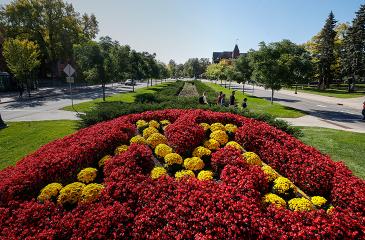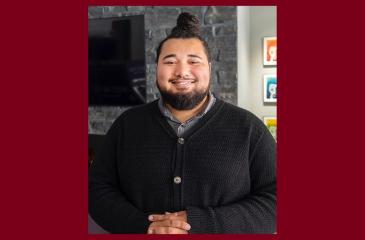Interprofessional education is a hot idea. Fortunately for us, at the University of Minnesota we are at the forefront of making this a reality. The complexity of human life, which is increasing with new discoveries every day, demands that we learn to work together to treat the whole patient—to keep them healthy or to restore them to health, their families, and the community. Not only are we focusing on interprofessional education, but on interprofessional research and clinical care as well. We have a few exceptional examples of this that I would like to share.
Last week I visited our Community-University Health Care Center (CUHCC), which is a fantastic example of patient-centered, interprofessional care. CUHCC is carefully tailored to meet the needs of its community. Founded to serve children and low-income families and currently providing care to a community with a large immigrant population, CUHCC offers convenient access to a wide variety of resources, with on-site interpreters, social workers and victim advocacy, legal help, mental health care, dentistry, pharmacy, and care coordination services. It offers a vital and diverse environment of care providers, again reflecting the community it serves. It was eye-opening to see this model in such effective action and a great reminder that the value of what we do is not measured in money, but in lives touched and made better. It was truly inspiring.
The complexity of human life, which is increasing with new discoveries every day, demands that we learn to work together to treat the whole patient—to keep them healthy or to restore them to health, their families, and the community.
In another example, this week we are hosting a meeting that focuses on developing curriculum and connections that will improve interprofessional education and practice. We cannot “accidentally” train the health care providers of the future to work together. It must be a thoughtful, deliberate process, whereby universities and other educational institutions must learn from one another. It is imperative that we embrace the intellectual diversity and inclusion in all aspects of training our students for the future. Providing the best patient care and experience will depend on team medicine, and we are focused on preparing professionals in health care who will excel in it.
Last, but certainly not least, the University was recently awarded a $42.6 million grant for our Clinical and Translational Science Institute (CTSI). Our research programs could not function adequately without our being part of the National Institutes of Health CTSI network, and it is a vital part of training our future workforce, streamlining the process of navigating complex research regulation, and keeping us aligned with the national landscape of medical and scientific innovation. This is the second successful application led by Dr. Bruce Blazar, a superb investigator in his own right. He has brought a unique blend of ambition for improvement, skill at directing application and operational processes, and a willingness to undertake difficult tasks for the greater good. In this and other ways he is the exemplar of a true academician.



